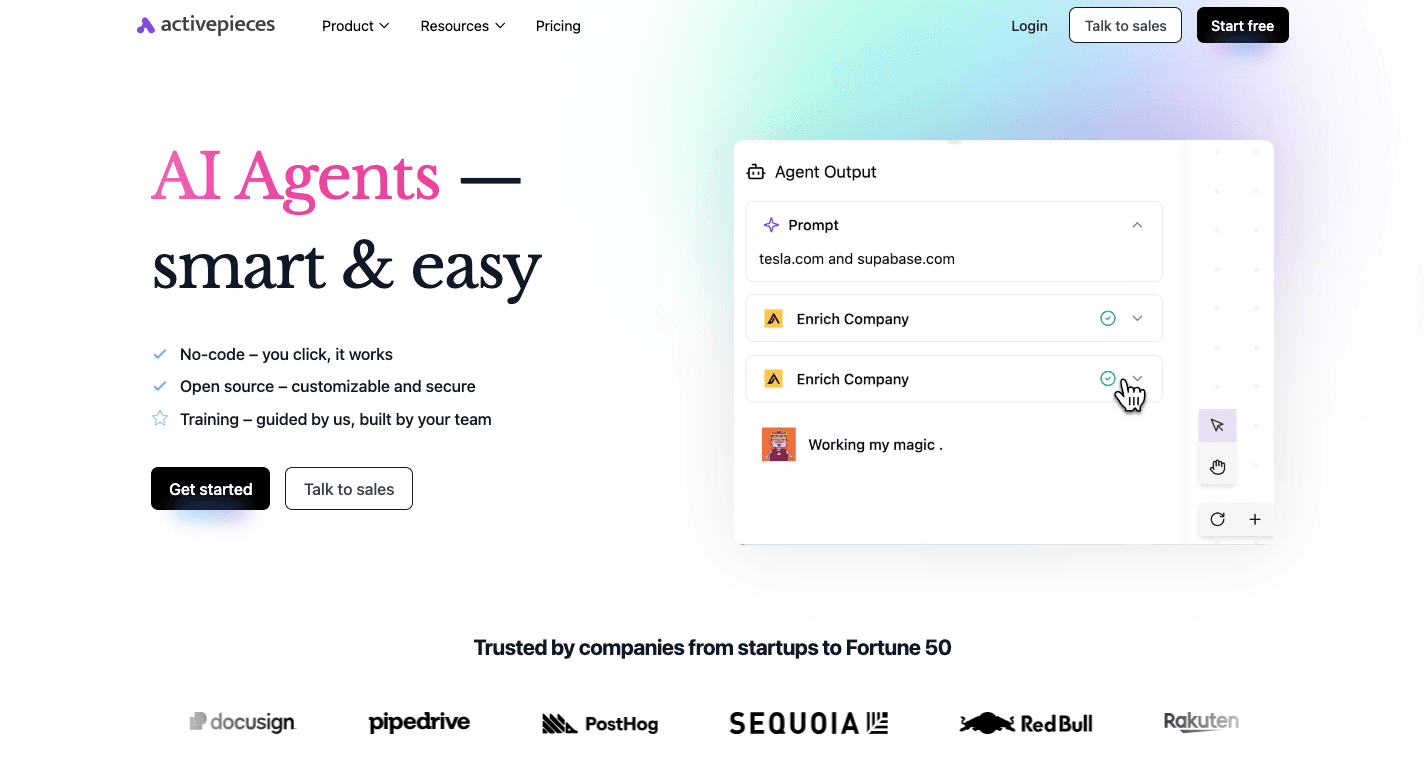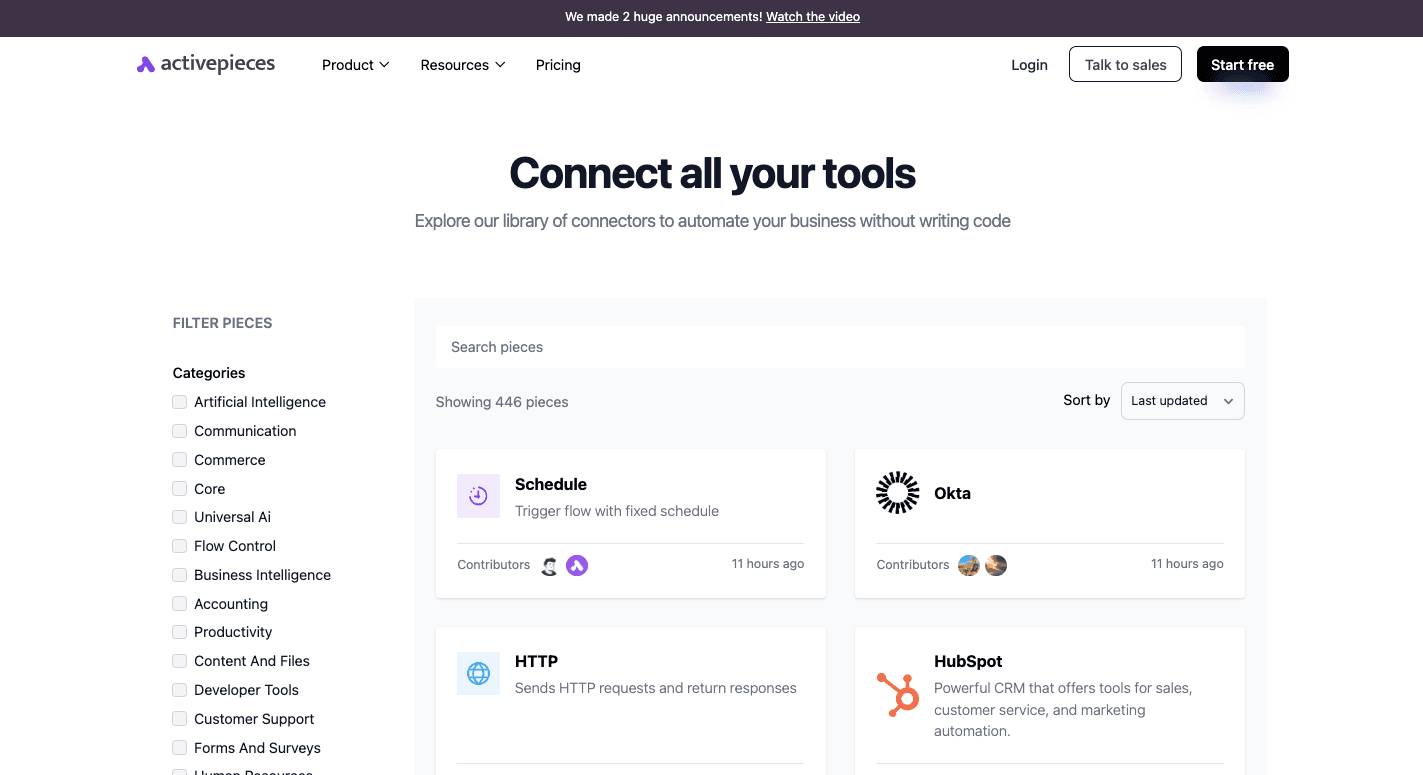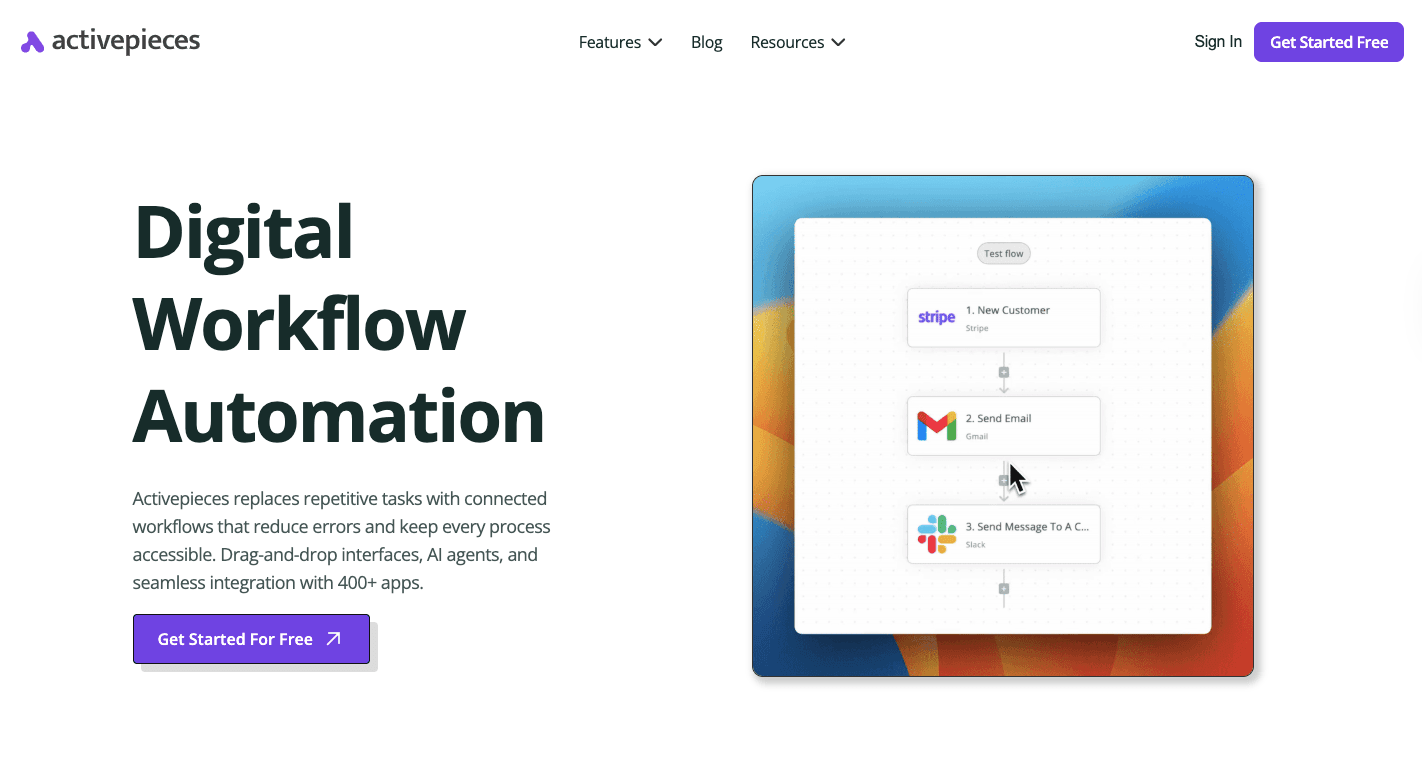Enterprise Agents: Definition, Use Cases, Business Impact

Artificial intelligence changes how businesses operate, and enterprise agents are at the center of that shift. These AI agents can plan, decide, and act across enterprise systems to complete complex processes with little human oversight.
In contrast with simple chatbots, enterprise agents understand goals through natural language, connect to existing systems, and make data-driven decisions that improve outcomes.
As companies look to boost operational efficiency and cut manual effort, enterprise agents offer a direct way to make it happen. In this article, you’ll learn what enterprise AI agents are, how they work, and the real-world business impact they create across every department.
Experience enterprise-grade automation that anyone can use. Sign up today!
What Are Enterprise Agents?
An enterprise agent connects to your company tools, pulls information from files or databases, and acts inside those systems the same way a trained person would. Each agent operates with a clear purpose and limited supervision.
Every modern agent runs on enterprise AI technology that depends on:
- Natural language processing (NLP)
- Large language models (LLMs)
- Machine learning (ML)
These methods let it read text, understand intent, and create action plans in ordinary natural language. It reacts to triggers inside enterprise systems and uses data to decide what happens next.
A typical agent manages vast amounts of information and combines inputs from several tools to create a single, accurate view of customer data. Companies use this visibility to make faster data-driven decisions and shorten process times.
In short, enterprise agents have become the base of the future of enterprise work, which links people, systems, and actions into a connected network of intelligent systems to automate tasks.
How Enterprise Agents Work
Enterprise agents operate in a continuous cycle of observing, deciding, and acting. It monitors triggers across your company tools, such as a new support ticket or a customer message. Once a signal appears, the agent collects the details it needs, studies them, and forms a plan.
During that planning stage, it uses enterprise AI systems to understand context and interpret user intent in natural language. It then chooses the right sequence of steps, applies logic, and moves through each action until the job is done.
Every agent keeps learning from its results. If an outcome doesn’t meet the mark, it adjusts the next time the same trigger appears. Over time, that cycle cuts down repetitive tasks and raises consistency.
As your teams connect agents across departments, they can complete tasks faster and with better accuracy. Groups of agents now redefine how organizations operate and take on complex routines that once depended on people checking every step by hand.
Components of Enterprise Agents
Typically, enterprise agents include:
- Models (the reasoning core)
- Data layers (memory and knowledge)
- Connectors (hands-on tools)
- Workflows (orchestration and automation)
Let’s explore each component.
1. Models
Every enterprise agent depends on a model that decides how it processes information and acts on it. It draws from stored company knowledge, checks the data it has access to, and weighs the possible actions before choosing one.
Once the reasoning core decides what to do, it calls on connectors to carry out the work inside apps and databases. That constant loop of analysis, action, and feedback forms the base of intelligent automation in most enterprise workflows.
2. Data Layers
Data layers hold everything the agent needs to recall later: past cases, user information, and business rules.
Two kinds of memory keep the system balanced:
- Short-term memory manages the details inside a single exchange, like a live conversation or one workflow run.
- Long-term memory stores information from earlier interactions and official company records.
Together, they help the agent stay accurate, traceable, and personalized in its responses.
Each time the model needs background, it looks through these layers to find relevant data. The system stores information in a way that makes patterns easy to match, so the agent can recognize similar cases and respond with grounded context.
3. Connectors
Connectors sit between the reasoning core and the software you already use. These connectors make task automation possible at scale by enabling agents to interact with various systems directly.
The model determines the next move, sends the command through a connector, and then checks the result once it’s complete. That connection loop keeps the agent grounded in real business systems.
4. Workflows
Workflows organize the sequence of events and control how different actions line up. When a trigger appears, the workflow arranges each step and assigns it to the right function.
As the agent collects feedback, it learns how to predict what should happen next. That feedback loop supports intelligent automation and keeps workflows across multiple systems consistent.
Why Activepieces Is the Best Automation Platform for Enterprises’ Complex Processes

Activepieces gives enterprises a way to automate work without limits. It connects tools, data, and people while keeping full control over data privacy.
You handle thousands of moving parts each day, from emails to Slack messages, and Activepieces ties them together through seamless integration.
Beyond that, it offers:
No-Code Builder
The no-code builder in Activepieces makes automation easy for everyone. It uses a visual, drag-and-drop interface so you can create workflows by connecting pieces instead of writing code. Each flow follows a rule: when one event happens, another action follows.
For instance, a flow can start when a form is submitted or a new row appears in your spreadsheet. The system can then post updates, create tasks, or send messages automatically.
It even supports conditions, loops, and branching logic, so you can build simple and advanced automations.
Deep Integrations to Your Existing Systems
Right now, Activepieces connects applications through 446+ ready-made integrations, known as pieces. That number continues to increase since the community contributes new pieces every week.

Some integrations you could use:
- OpenAI
- ElevenLabs
- Google Sheets
- Slack
- ClickUp
- HubSpot
- Discord
- Zoho CRM
- Salesforce
- Vimeo
- Microsoft Power BI
Once a connection is made, the platform handles authentication, API calls, and data transfer behind the scenes. Information flows between tools through triggers and actions.
These data integrations let you run workflows that cross departments and data sources. Since every action is managed through a visual interface, even non-technical users can automate a workflow.
Multi-Agent and MCP Support
Activepieces takes automation a step further with multi-agent and model context protocol (MCP) support. The platform lets you build and coordinate multiple AI agents, each assigned to a specific role.
Through MCP integration, Activepieces connects with external AI clients that can trigger workflows through simple text commands. A model like Claude can activate an automation directly to run complex actions across apps and systems.
Connect with sales and find out how Activepieces can boost your workflow!
Real-World Impact of Enterprise Agents
Enterprise agents reshape daily work by connecting tools, managing decisions, and transforming how businesses operate. Some key benefits it offers:
- Agents increase operational efficiency by cutting delays and finishing work that once needed several people.
- Teams streamline operations through automated steps that keep workflows consistent and predictable.
- Employees gain time to focus on strategic work while agents take over routine or data-heavy tasks.
- Real-time insights allow businesses to make informed decisions that prevent errors and guide smarter planning.
- Continuous improvement in task handling helps improve efficiency across departments.
- Companies gain a clear competitive edge as agents react faster to shifts in demand or market trends.
- Managers and staff strengthen results by leveraging AI alongside human judgment.
- Built-in guardrails encourage transparency and responsible action, addressing ethical considerations.
Enterprise Agent Use Cases Across Industries
Each specific agent handles a role within larger agentic systems that connect data and workflows. Here are some of the real-world applications of these agents:
Customer Service and Support
Agents manage everyday customer inquiries such as order tracking, billing updates, and password resets with speed and consistency.
That frees your support staff to focus on complex situations that require a human touch for a smoother service delivery and shorter wait times for customers.
These systems respond instantly and answer questions across chat, email, and phone channels using the same knowledge base. The tone stays consistent, and the information stays accurate, which builds long-term customer trust.
When integrated with service desks, agents summarize conversations, tag issues, and pass full context to human representatives before a handoff. No one has to repeat details or start over.
By enhancing customer experience, you maintain responsiveness at any scale while keeping operational costs under control.
Sales and Marketing
Enterprise agents update CRM entries and track campaign data automatically. These systems assist employees in deciding which leads to pursue and which audiences are most likely to respond.
Agents also write tailored follow-ups, adjust ad budgets, and measure engagement trends in real time. That insight shortens the distance between a lead and a conversion.
While the agents manage automation, your teams can focus on building genuine connections and refining strategy.
For marketing, enterprise agents keep campaigns current by watching metrics continuously. They can shift targeting, refresh creative assets, or pause underperforming ads without waiting for manual input.
In turn, it results in faster execution and better alignment between data and action.
Human Resources and Operations
In HR, agents process onboarding forms, verify credentials, and handle document processing across internal systems. That reliability lets your HR specialists spend more time developing employee programs.
A workflow that once required multiple departments now runs on its own. Each department receives current information without long email threads or manual coordination.
Agents further maintain accuracy across departments and reduce the back-and-forth that slows decisions. Human oversight remains part of the process, but your teams rely less on manual updates and more on automated precision.
IT and Data Management
When an issue arises, an enterprise agent reviews datasets for accuracy, removes duplicates, and guards sensitive data across all systems. They check compliance requirements automatically and maintain up-to-date audit trails that reduce security risk.
Aside from that, these agents detect unusual patterns, send alerts, and can even fix small issues before they grow. With these safeguards in place, your IT team can focus on long-term improvements rather than daily maintenance.
Orchestrate Artificial Intelligence Enterprise Systems With Activepieces

As an enterprise business, you need a way to connect AI, automation, and your existing workflows. Activepieces gives you that control. It lets you seamlessly integrate tools, manage sensitive information, and reduce manual effort through an open, secure framework.
Even non-technical users can design workflows through its visual builder that simplifies complex logic. Meanwhile, the built-in AI Copilot guides users through each step to build faster and with fewer mistakes.
By combining automation, security, and accessibility, Activepieces becomes an orchestration engine for intelligent work. It helps you centralize your operations, protect your data, and maintain full visibility over every business process.
Give Activepieces a go and watch your team’s productivity rise instantly!
FAQs About Enterprise Agents
What is an enterprise agent?
An enterprise agent is an AI system that connects business tools and data to perform tasks automatically. It uses foundation models and contextual information to make decisions, follows standard protocols, and operates within fully integrated networks.
These agents often work agent to agent to share insights, streamline workflows, and strengthen decision-making capabilities across the enterprise.
What is the difference between ThousandEyes Endpoint Agent and Enterprise Agent?
The Endpoint Agent runs on user devices to track performance and connectivity. On the other hand, the Enterprise Agent monitors networks, apps, and services within data centers or the cloud, giving deeper visibility into system health.
What are the installation types available for enterprise agents?
Enterprise agents can run on virtual machines, physical servers, or Docker containers.


